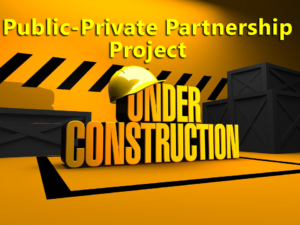
As a new year approaches, state lawmakers throughout the U.S. are projecting the lowest state spending increases since the Great Recession. In fact, public-sector spending at the local levels of government has been outpacing state spending for a number of years.
A recent survey by the National Association of State Budget Officers indicates that general fund spending across the states in 2018 will total approximately $830.2 billion, a growth rate of only 2.3 percent.
Even that small increase in revenues will likely come from increased fees and taxes. Twenty-six states enacted spending increases below 2 percent while more than a dozen states have actually cut spending for the next fiscal year.
Public officials in states that have been cash-strapped for the last number of years have already exhausted internal creativity and innovation. There are just so many ways to do “more with less” and most say they have no new ideas left.
In states that enacted fee and tax increases, the total net result was only $9.9 billion in additional revenue. Now lawmakers and budget gurus must explore alternative funding options. That’s because some projects and budget items simply cannot be overlooked, decreased or eliminated.
 Sluggish revenue growth in states over the last few years netted revenues below original budget projections in 27 states last year and 22 states were forced to make mid-year budget cuts totaling $3.5 billion. Twenty-five states are cutting spending in order to invest additional funds into rainy day accounts. That has become so common that from 2011 to 2017, rainy day fund balances nationwide increased from 1.9 percent of general fund spending to 5.2 percent.
Sluggish revenue growth in states over the last few years netted revenues below original budget projections in 27 states last year and 22 states were forced to make mid-year budget cuts totaling $3.5 billion. Twenty-five states are cutting spending in order to invest additional funds into rainy day accounts. That has become so common that from 2011 to 2017, rainy day fund balances nationwide increased from 1.9 percent of general fund spending to 5.2 percent.
Gone are the days when collaborative efforts between the public and private sectors were primarily vehicles for completing transportation infrastructure projects such as roads and bridges. Today, governments are also turning to collaborative initiatives such as public-private partnerships (P3s) for water and wastewater projects; new public schools; parks maintenance and operations; broadband expansion; academic and athletic facilities and student housing on public university campuses; courthouse construction; medical and health care facilities; and public transit projects.
P3 collaborations allow government entities to take advantage of readily available private capital for projects they cannot afford. These types of engagements also make state-of-the-art expertise and resources available to governmental entities.
Some of the costliest items on state budgets are related to maintenance – especially maintenance that has been deferred too long. Billions of dollars are spent each year to maintain public buildings, utility plants, highways, bridges and other public holdings. In many cases, a new public building constructed through a P3 will replace an aging current facility and thus eliminate the need for what could be millions of dollars in repair and maintenance costs.
The Pennsylvania Department of Transportation’s Rapid Bridge Replacement program is a prime example of the creativity allowed by P3 engagements. The department and a consortium of private partners put in place an initiative to replace more than 550 of the state’s structurally deficient bridges. Investors will be repaid over a long-term contract. That contract will require the consortium financing, designing and constructing the new public asset to also handle all maintenance.
Maryland’s governor has proposed a $9 billion project for private partners to design, build, finance, operate and maintain four new lanes on two interstate highways around the congested U.S. capital region. Competition from private-sector contractors will be fierce for this initiative.
Arizona’s governor is seeking a waiver to allow his state to partner with private contractors also. The state wants to find a private-sector partner to operate all new and existing interstate rest stops, at no cost to the state. A planned P3 agreement will not only hand off responsibility for financing, building and maintaining the rest stops, but it will also require the contractor to generate revenue through retail operations at the rest stops. That revenue will then be split between the partner and the state.
Alternative funding may be more attractive to taxpayers rather than increased taxes and fees. Whether that is the case or not, most large public projects in 2018 will require alternative funding of some type.
